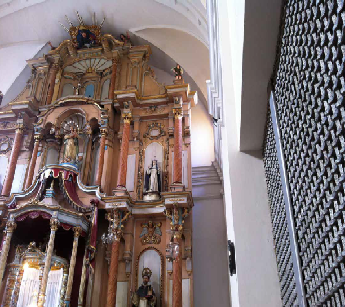Resumen
En este trabajo se presentan dos monasterios de clausura de la ciudad de Los Reyes de Lima: Las Descalzas de San José y Nuestra Señora de la Peña de Francia, coloquialmente llamado Santa Clara. Ambos sirven como ejemplo para caracterizar la morfología arquitectónica tradicional de esta clase de conjuntos religiosos apenas comenzado el siglo XVII y durante los siguientes años del virreinato del Perú. Uno de los espacios típicos que se encuentran allí exclusivamente son las celdas residenciales de las monjas, objeto de particular interés de nuestro estudio en cuanto fueron ambientes construidos, codiciados, modificados, peleados –y poco estudiados desde la perspectiva física. Así, este trabajo utiliza documentos y fuentes primarias del Archivo Arzobispal de Lima, además de relevamientos y trabajo de campo para aproximarse al entendimiento del tema desde lo arquitectónico, tanto en cuanto a materialidad como en morfología, funcionalidad y manejo del espacio. El estudio parte de un proyecto más amplio que abarca un sector importante de la Lima tradicional; apunta, además, a contribuir en la creación de conocimiento para la conservación de conjuntos religiosos similares en la ciudad.
La revista Apuntes se encuentra registrada bajo la licencia Creative Commons Reconocimiento 4.0 Internacional. Por lo tanto, esta obra se puede reproducir, distribuir y comunicar públicamente en formato digital, siempre que se reconozca el nombre de los autores y a la Pontificia Universidad Javeriana. Se permite citar, adaptar, transformar, autoarchivar, republicar y crear a partir del material, para cualquier finalidad (incluso comercial), siempre que se reconozca adecuadamente la autoría, se proporcione un enlace a la obra original y se indique si se han realizado cambios. La Pontificia Universidad Javeriana no retiene los derechos sobre las obras publicadas y los contenidos son responsabilidad exclusiva de los autores, quienes conservan sus derechos morales, intelectuales, de privacidad y publicidad.
El aval sobre la intervención de la obra (revisión, corrección de estilo, traducción, diagramación) y su posterior divulgación se otorga mediante una licencia de uso y no a través de una cesión de derechos, lo que representa que la revista y la Pontificia Universidad Javeriana se eximen de cualquier responsabilidad que se pueda derivar de una mala práctica ética por parte de los autores. En consecuencia de la protección brindada por la licencia de uso, la revista no se encuentra en la obligación de publicar retractaciones o modificar la información ya publicada, a no ser que la errata surja del proceso de gestión editorial. La publicación de contenidos en esta revista no representa regalías para los contribuyentes.


